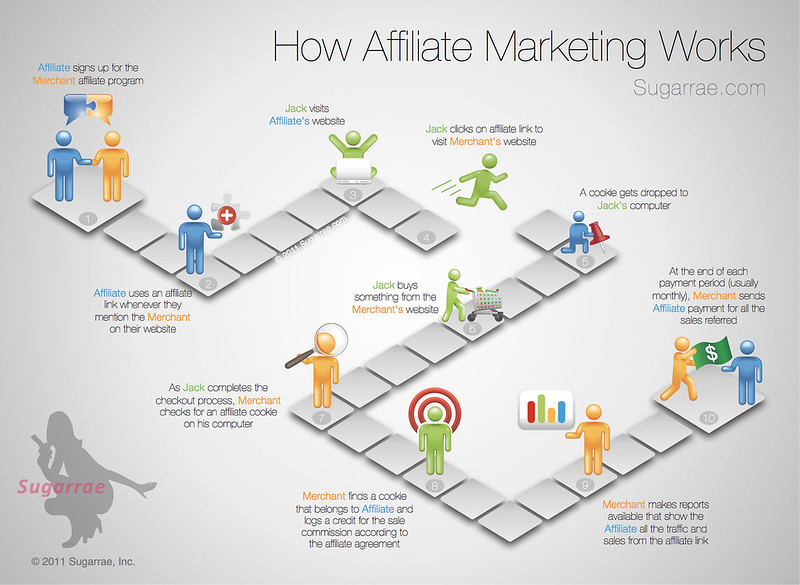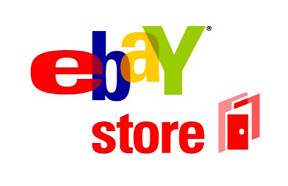
Contents
- 1 Pros and Cons of Each
- 2 What is Affiliate Marketing?
- 3 What is an eBay Store?
- 4 Affiliate Marketing: Pros
- 5 Affiliate Marketing: Cons
- 6 eBay Store: Pros
- 7 eBay Store: Cons
- 8 Comparing the Two Models
- 9 Which Model is Right for You?
- 10 Hybrid Approach: Combining Both Models
- 11 Tips for Success
- 12 Conclusion
- 13 Related Articles
Pros and Cons of Each
This is about affiliate marketing vs an eBay Store. The digital marketplace offers numerous opportunities for entrepreneurs to generate income online. kpopular models—affiliate marketing and running an eBay store—stand out for their accessibility and potential profitability. Each approach has unique advantages and challenges, making them suitable for different types of entrepreneurs based on their goals, resources, and preferences. In this comprehensive 2000-word blog post, we’ll explore the pros and cons of affiliate marketing and eBay stores, helping you decide which path aligns best with your business aspirations.
What is Affiliate Marketing?
Affiliate marketing is a performance-based business model where individuals (affiliates) earn commissions by promoting products or services from other companies. Affiliates use unique tracking links to drive traffic or sales to a merchant’s website, earning a percentage of each sale or a fixed amount per lead. Common platforms for affiliate marketing include Amazon Associates, ClickBank, and ShareASale, with affiliates often promoting products through blogs, social media, email marketing, or YouTube channels.
What is an eBay Store?
An eBay store is an online storefront hosted on eBay, where sellers list physical or digital products for sale. Sellers can operate as individuals or businesses, offering new, used, or refurbished items. eBay stores allow sellers to customize their brand, manage inventory, and leverage eBay’s massive audience to reach buyers worldwide. Sellers pay fees, including listing fees, final value fees, and store subscription costs, to maintain their presence on the platform.
Affiliate Marketing: Pros
1. Low Startup Costs
Affiliate marketing requires minimal upfront investment. You don’t need to create products, manage inventory, or handle shipping. Basic requirements include a website or social media presence, which can be set up with low-cost tools like WordPress or free platforms like YouTube. Many affiliate programs are free to join, making this model accessible to beginners.
2. Passive Income Potential
Once content (e.g., blog posts, videos, or social media posts) is created and optimized, it can generate income over time with minimal maintenance. Evergreen content, such as product reviews or tutorials, can attract traffic and commissions for months or years, providing a scalable income stream.
3. No Inventory or Customer Service
Affiliates don’t handle physical products, eliminating the need for storage, packaging, or shipping. Merchants manage customer service, returns, and refunds, allowing affiliates to focus solely on marketing and content creation.
4. Flexibility and Scalability
Affiliate marketing offers flexibility in terms of niche, products, and promotion methods. You can promote anything from tech gadgets to fitness programs, tailoring your efforts to your interests or audience. As your audience grows, you can scale by diversifying your content or joining multiple affiliate programs.
5. Global Reach
With affiliate marketing, you can reach a worldwide audience through digital channels. Many affiliate programs, like Amazon Associates, operate in multiple countries, allowing you to earn commissions from international sales without logistical hurdles.
6. Diverse Income Streams
Affiliates can join multiple programs and promote various products, reducing reliance on a single income source. This diversification minimizes risk if one program changes its terms or a product becomes less popular.
Affiliate Marketing: Cons
1. High Competition
Popular niches like technology, health, and finance are highly competitive, with established affiliates dominating search engine results. Breaking through requires strong SEO skills, high-quality content, and persistence, which can be daunting for newcomers.
2. Dependence on Third Parties
Affiliates rely on merchants for product quality, commission rates, and program stability. If a merchant reduces commissions, discontinues a program, or fails to deliver quality products, your income and reputation can suffer.
3. Delayed Earnings
Building an audience and generating consistent income takes time. It may take months to see significant earnings, especially if you’re starting from scratch with no traffic or followers. Patience and consistent effort are critical.
4. Algorithm and Policy Changes
Search engine algorithms (e.g., Google) and platform policies (e.g., Amazon Associates) can change, impacting your traffic or commissions. For example, Amazon reduced commission rates for certain categories in 2020, affecting many affiliates’ earnings.
5. Limited Control
Affiliates have no control over product pricing, availability, or customer experience. Negative customer experiences (e.g., delayed shipping or poor product quality) can harm your credibility, even though you’re not directly responsible.
6. Income Instability
Earnings can fluctuate due to seasonality, market trends, or changes in consumer behavior. Unlike a salary, affiliate income is unpredictable, requiring careful financial planning.
eBay Store: Pros

1. Established Marketplace
eBay’s global reach and massive user base (over 180 million active buyers) provide instant access to customers. Sellers benefit from eBay’s brand recognition and built-in traffic, reducing the need for extensive marketing.
2. Control Over Branding and Pricing
An eBay store allows you to customize your storefront, set your prices, and build a brand identity. You can create a professional presence with logos, banners, and curated listings, fostering customer trust and loyalty.
3. Diverse Product Options
Sellers can list a wide range of products, from vintage collectibles to brand-new electronics. This flexibility allows you to cater to niche markets or experiment with trending items, adapting to consumer demand.
4. Immediate Sales Potential
Unlike affiliate marketing, which requires building an audience, eBay listings can generate sales quickly if priced competitively and optimized for search. Well-crafted listings with clear photos and descriptions can attract buyers within hours.
5. Tangible Business Ownership
Running an eBay store feels like operating a “real” business. You manage inventory, fulfill orders, and interact with customers, providing a sense of ownership and control that affiliate marketing lacks.
6. Potential for High Margins
By sourcing products at low costs (e.g., wholesale, thrift stores, or dropshipping), sellers can achieve high profit margins. Strategic pricing and bulk purchasing can further boost profitability.
eBay Store: Cons
1. Higher Startup and Operational Costs
Running an eBay store involves costs like inventory, shipping supplies, store subscription fees (starting at $4.95/month for a Basic Store), listing fees, and final value fees (typically 10-13% of the sale price). These expenses can eat into profits, especially for low-margin products.
2. Time-Intensive Operations
Managing an eBay store requires significant time for sourcing products, creating listings, packing orders, and handling customer inquiries. Unlike affiliate marketing, which can become semi-passive, eBay selling demands ongoing effort.
3. Inventory and Storage Challenges
Physical products require storage space, which can be problematic for sellers with limited room. Overstocking can tie up capital, while understocking can lead to missed sales opportunities.
4. Customer Service Responsibilities
Sellers are responsible for resolving customer issues, such as returns, refunds, or shipping delays. Negative feedback from dissatisfied buyers can harm your seller rating, affecting your visibility and sales.
5. Marketplace Competition
eBay is a crowded marketplace, with thousands of sellers offering similar products. Standing out requires competitive pricing, excellent customer service, and optimized listings, which can be challenging for new sellers.
6. Platform Fees and Policy Changes
eBay’s fees can significantly reduce profits, especially for high-volume sellers. Additionally, eBay’s policies (e.g., seller performance standards or fee structures) can change, requiring sellers to adapt quickly to maintain profitability.
Comparing the Two Models
1. Startup Costs and Risk
Affiliate marketing is the clear winner for low startup costs and minimal financial risk. You can start with a free blog or social media account and join affiliate programs at no cost. eBay stores, however, require investment in inventory, fees, and supplies, posing a higher financial risk, especially if products don’t sell.
2. Time Commitment
Affiliate marketing requires significant upfront time to create content and build an audience, but it can become semi-passive over time. eBay stores demand consistent time for listing, shipping, and customer service, making them more labor-intensive in the long run.
3. Income Potential
Both models offer substantial income potential, but the paths differ. Affiliate marketing scales with traffic and audience size, with top affiliates earning six or seven figures annually. eBay stores rely on product margins and sales volume, with successful sellers also achieving high earnings through bulk sales or niche markets.
4. Control and Responsibility
eBay sellers have more control over their business, from pricing to branding, but this comes with greater responsibility for inventory and customer service. Affiliates have less control over products and commissions but avoid operational burdens.
5. Scalability
Affiliate marketing is highly scalable, as you can create more content, target new niches, or join additional programs without physical constraints. eBay stores are less scalable due to inventory, storage, and time limitations, though dropshipping can mitigate some of these challenges.
6. Long-Term Stability
Affiliate marketing is vulnerable to algorithm changes, program terminations, or commission cuts, making it less predictable. eBay stores offer more stability if you maintain good seller metrics, but market competition and fee increases can pose challenges.
Which Model is Right for You?
Choosing between affiliate marketing and an eBay store depends on your goals, resources, and preferences. Here are some scenarios to guide your decision:
- Choose Affiliate Marketing If:
- You have limited funds and want to start with minimal risk.
- You enjoy content creation (writing, video production, or social media).
- You prefer a flexible, location-independent business model.
- You’re patient and willing to invest time in building an audience for long-term passive income.
- Choose an eBay Store If:
- You have capital to invest in inventory and fees.
- You enjoy hands-on business operations like sourcing products and fulfilling orders.
- You want immediate sales potential and a tangible business presence.
- You’re comfortable with customer service and managing a marketplace presence.
Hybrid Approach: Combining Both Models
For some entrepreneurs, combining affiliate marketing and an eBay store can maximize income potential. For example, you could run an eBay store to sell physical products while using a blog or YouTube channel to promote affiliate products in the same niche. This approach diversifies income streams and leverages the strengths of both models—eBay’s immediate sales and affiliate marketing’s passive income potential. However, managing both requires strong organizational skills and time management to avoid burnout.
Tips for Success
Affiliate Marketing Tips
- Choose a Niche: Focus on a specific niche to attract a targeted audience and reduce competition.
- Create High-Quality Content: Invest in well-researched, SEO-optimized content that provides value to your audience.
- Diversify Programs: Join multiple affiliate programs to spread risk and increase earning potential.
- Track Performance: Use analytics tools to monitor traffic, clicks, and conversions, optimizing your strategy accordingly.
eBay Store Tips
- Optimize Listings: Use clear photos, detailed descriptions, and relevant keywords to improve search visibility.
- Source Smart: Find low-cost products through wholesalers, thrift stores, or dropshipping to maximize margins.
- Provide Excellent Service: Respond promptly to customer inquiries and resolve issues to maintain high seller ratings.
- Monitor Fees: Regularly review eBay’s fee structure and adjust pricing to ensure profitability.
Conclusion

Affiliate marketing and eBay stores are viable paths to online income, each with distinct advantages and challenges. Affiliate marketing offers low costs, flexibility, and passive income potential but requires patience and content creation skills. eBay stores provide immediate sales opportunities and brand control but demand higher investment and operational effort. By weighing the pros and cons and aligning your choice with your skills, resources, and goals, you can build a successful online business. For those with the capacity, a hybrid approach can combine the best of both worlds, creating a diversified and resilient income stream.







